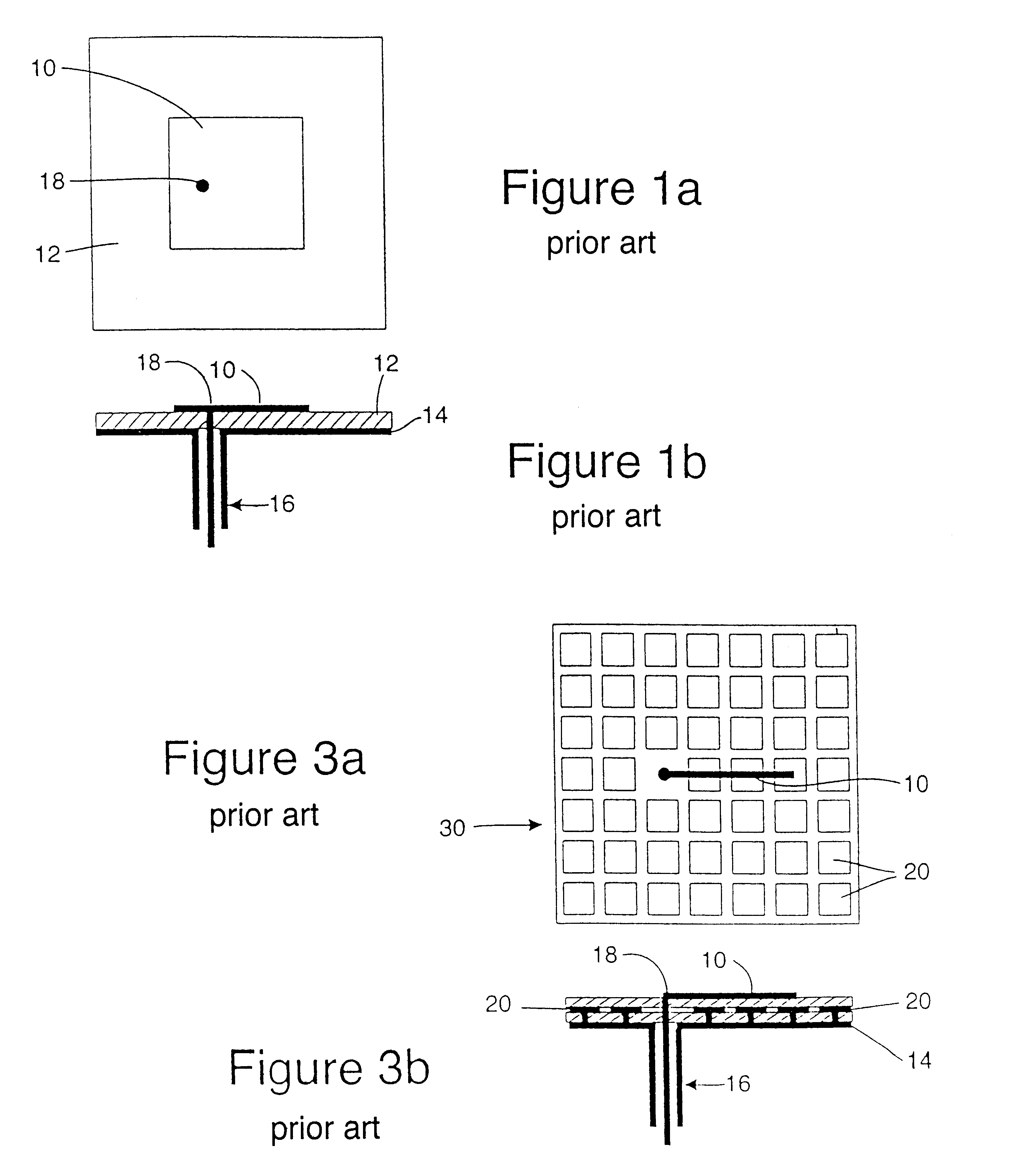Method of providing increased low-angle radiation sensitivity in an antenna and an antenna having increased low-angle radiation sensitivity
a radiation sensitivity and low-angle radiation technology, applied in the structure of radiating elements, substantially flat resonant elements, resonance antennas, etc., can solve the problems of increasing the demands of future telecommunication systems on antennas, presenting a number of difficulties for antennas, and not suitable for satellite communication services, etc., to improve radiation, improve low-angle radiation, and increase low-angle radiation
- Summary
- Abstract
- Description
- Claims
- Application Information
AI Technical Summary
Benefits of technology
Problems solved by technology
Method used
Image
Examples
Embodiment Construction
In some situations, it is desirable to enhance surface currents, or to excite them to a greater degree than would be possible with an ordinary antenna. It has been found experimentally that this can also be done using a conventional Hi-Z surface, by operating it in a frequency range in which it is not normally used, that is, in a leaky TE wave range. Results of experiments which were performed are shown in FIGS. 4a-4c. As can be seen by reference to FIG. 4c, the H-plane radiation pattern is similar to that of the patch antenna, but the E-plane radiation pattern shows greatly enhanced radiation near the horizon. The E-plane is the plane that is perpendicular to the surface, and which contains the wire. The H-plane is perpendicular to both the surface and the wire.
One experiment was performed as follows: The antenna under test consisted of a thin wire that was about 4 cm long. It was centered in a 12 cm by 12 cm Hi-Z surface 30 which was centered on a 60 cm by 60 cm metal ground plane...
PUM
 Login to View More
Login to View More Abstract
Description
Claims
Application Information
 Login to View More
Login to View More - R&D
- Intellectual Property
- Life Sciences
- Materials
- Tech Scout
- Unparalleled Data Quality
- Higher Quality Content
- 60% Fewer Hallucinations
Browse by: Latest US Patents, China's latest patents, Technical Efficacy Thesaurus, Application Domain, Technology Topic, Popular Technical Reports.
© 2025 PatSnap. All rights reserved.Legal|Privacy policy|Modern Slavery Act Transparency Statement|Sitemap|About US| Contact US: help@patsnap.com



